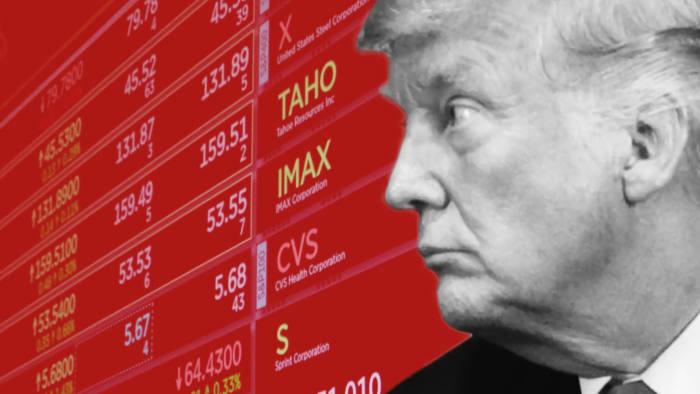The Trump bear market for bonds is fast arriving
Republican tax package will definitively put an end to 36-year upswing for Treasuries
John Plender

With Donald Trump set to sign off on the Republican tax package by Christmas, it seems almost certain that the president will be definitively putting an end to the 36-year bull market in US government bonds. With hindsight, we can identify the inflection point as July 5 last year when 10-year Treasuries closed at a rock-bottom yield of 1.37 per cent. The economist Paul Schmelzing, in a paper for the Bank of England that charts the risk-free rate back to the 13th century, points out that this is without historical precedent.
The immediate question is how much damage a bear market might inflict on investors. The most relevant pointer is the bond bear market of the second half of the 1960s. The parallels with today are striking. For a start, the US labour market was tight. Unemployment fell from 5.5 per cent at the end of 1963 to 3.6 per cent at the end of 1966. There was little or no slack in the economy and considerable complacency about inflation which was around 1.5 per cent in the middle of the decade.
There was fiscal activism: tax cuts under President John F. Kennedy in 1964 followed by increased public spending under his successor Lyndon Johnson for the Great Society programmes and the Vietnam war.
The US Federal Reserve started tightening under William McChesney Martin with a half per cent increase in the discount rate in late 1964 and the same again in late 1965 — notably similar timing to the Fed’s behaviour in the current cycle. Another interesting parallel is that no one was entirely sure how accommodative monetary policy was in the mid-1960s.
While Martin had famously remarked that the task of central bankers was to take away the punchbowl just as the party gets going, monetary policy was reactive rather than pre-emptive and conspicuously slow. Both Congress and the White House were strongly opposed to interest rate rises.
By the end of the decade, workers’ calls for increased pay were vociferous and inflation had taken off, surging to a peak of 6.4 per cent in February 1970. Mr Schmelzing estimates that bond investors lost 36 per cent in real terms between 1965 and 1970.
Happily for today’s investors, there have been significant changes in the way monetary policy and markets work. Much of the stock of government IOUs is now in the hands of price-insensitive investors, such as pension funds, that hold the paper to maturity to match pension liabilities. For them, mark-to-market losses are neither here nor there. Workers have lost much of their bargaining power as a result of globalisation and new technology. Despite resort to quantitative easing, central banks around the world are finding it difficult to raise inflation to targeted levels.
Fiscal policy is more transparent. The Johnson administration doubled spending on the war without informing Congress, which would be unthinkable today. Meantime, monetary policy now involves inflation targeting and explicitly aims to be pre-emptive. Since the so-called taper tantrum in 2013 when the then-Fed chairman Ben Bernanke rattled the markets by proposing to reduce the central bank’s asset purchases, the Fed has communicated with extreme care and looks less likely to puncture the bond market.
Future Fed chair Jay Powell in his comments to the senate joint economic committee last week indicated that he would continue along the path adopted under the outgoing Janet Yellen.
Whether Mr Trump will bully Mr Powell as ferociously as Johnson bullied Martin remains to be seen.
Above all, as Jeffrey Lacker, president of the Federal Reserve Bank of Richmond, has recently emphasised, the disastrous inflationary experience of the 1970s has made it clear how costly it can be to lose control of inflation and allow inflation expectations to become unhinged.
Today, the problem is less one of complacency about inflation than the difficulty of understanding how the economy works in the post-crisis environment, securing a safe exit from unconventional central bank measures and handling the political fallout from rising inequality that has been exacerbated by central bank market rigging — all this against a background of bigger deficits and debt.
The new tax package, as well as being an unnecessary fiscal stimulus in an economy growing at an annualised rate of 3.3 per cent, will further increase inequality. The impending Trump bear market in bonds will not want for excitement.
0 comments:
Publicar un comentario